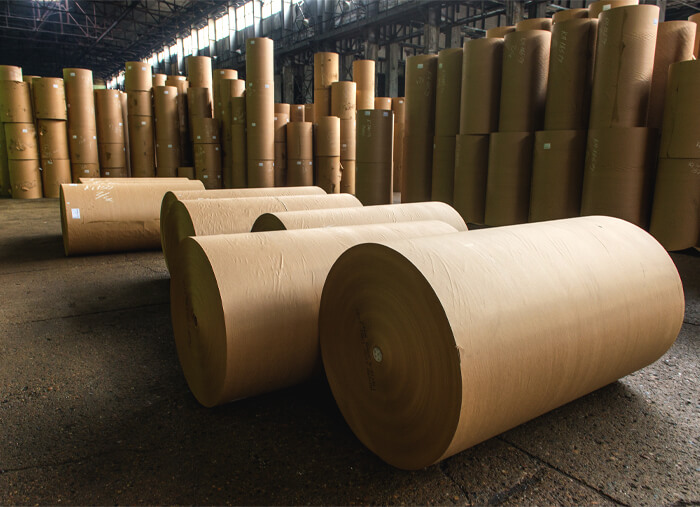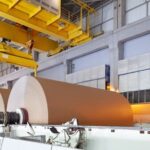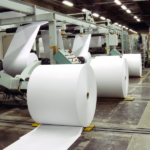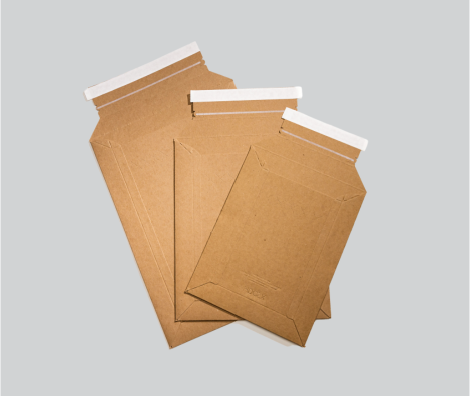Environmental benefits of paper and paperboard


paper and paperboard
In today’s world where sustainability and environmental awareness are paramount, paper and cardboard have become eco-friendly alternatives to many non-biodegradable materials. With a growing global awareness of the need to reduce carbon footprint and minimize waste, these materials stand out for their renewable nature, recyclability, and versatility of application. Below, we explore the various eco-friendly advantages of paper and paperboard in detail.
Renewable and Sustainable Resource
One of the main benefits of paper and cardboard is that they are made from wood, a renewable natural resource: forests, if managed responsibly, provide a continuous supply of raw materials without causing long-term depletion. Sustainable forest management practices ensure that several trees are planted for every one cut, helping to maintain ecosystem balance. Additionally, advances in agroforestry and the use of agricultural waste materials such as straw and sugarcane pomace in paper production have made paper production even more sustainable. paper and paperboard
Biodegradability
Unlike plastics and other synthetic materials that take hundreds of years to decompose, paper and cardboard are highly biodegradable: when released into the environment, they break down naturally into organic matter, helping to reduce pollution and enrich soils. This property makes it a preferred choice for packaging and disposable products as they do not contribute to the growing problem of waste accumulation in landfills.
Recyclability
Paper and paperboard are one of the most recycled materials in the world. Recycling paper reduces the need for raw materials for virgins, saves trees, and saves natural resources. What’s more, the recycling process uses much less energy than making new paper from raw wood pulp. Many countries have established strong recycling systems, making paper products an essential part of a circular economy, as they can be reused many times before their fibers degrade. paper and paperboard

Low Carbon Footprint
The production and use of paper and paperboard have a comparatively lower carbon footprint than many alternative materials. Modern papermaking facilities often use renewable energy sources, such as biomass, to power their operations. Additionally, the carbon dioxide absorbed by trees during their growth offsets the emissions generated during paper production, creating a near-neutral carbon cycle. By choosing paper-based products, consumers and businesses can help reduce greenhouse gas emissions.
Reduced Plastic Usage
The growing environmental impact of plastic waste is driving demand for paper and cardboard alternatives. These materials are now commonly used in packaging, replacing single-use plastics such as bags, straws and food containers. In particular, the loop package provides excellent resistance and sustainability and is light, so it is ideal to transport products without impairing the integrity of the environment.
Energy Efficiency in Production
Compared to synthetic materials such as plastic and aluminum, the production of paper and cardboard requires less energy. The use of renewable energy sources and advances in energy-saving technologies have further reduced the environmental impact of paper production. Many paper mills use waste materials such as bark and wood chips as bioenergy to power their operations, minimizing waste and promoting sustainability.
Versatility and Innovation
The versatility of paper and cardboard allows a wide range of applications, writing and printing through packaging and structure. The industry’s innovation has led to the development of water resistance, sustainable, and even edible paper products. These advances ensure that paper-based solutions can compete with non-biodegradable materials in terms of functionality while maintaining their environmental properties.
Contribution to Circular Economy
Paper and paperboard play a vital role in promoting a circular economy, where materials are reused, recycled, and repurposed instead of being discarded as waste. Products made from recycled paper require fewer resources and generate less pollution. By integrating these materials into daily life, individuals and industries alike can reduce their dependence on finite resources and contribute to sustainable development.
Compostable and Soil-Friendly
In addition to biodegradability, paper and paper are composed. In other words, it can be divided into compost with abundant nutrients under appropriate conditions. paper and paperboard This characteristic is especially useful for agricultural use and waste management, as composting waste reduces emissions and enhances soil fertility. Most paper products are free of harmful chemicals and will decompose without releasing toxins into the environment.

Eco-Friendly Printing and Coatings
The printing and packaging industries are turning to environmentally conscious practices to complement the environmental benefits of paper. The use of soy-based inks, water-based coatings and chlorine-free bleaching processes are minimizing the environmental impact of paper products. These innovations have made paper packaging and promotional materials more environmentally friendly, making them more appealing to environmentally conscious consumers. paper and paperboard
Supporting Local Economies and Communities
Sustainable forestry and paper are not only good for the environment, they also support local economies: responsible forestry practices create jobs in rural areas and promote community development. By investing in paper and paperboard products, businesses and consumers contribute to sustainable value chains that prioritize environmental and social well-being.
Reducing Marine Pollution
Plastic waste has become a serious threat to marine ecosystems, with millions of tons of plastic entering the oceans every year. paper and paperboard, as biodegradable alternatives, offer a solution to this crisis. Their extensive implementation can significantly reduce the amount of plastic waste, the protection of marine life, and maintaining ocean health.
Promoting Eco-Friendly Consumer Behavior
The growing popularity of paper and cardboard has encouraged consumers to adopt more environmentally friendly habits. The availability of paper products such as reusable shopping bags, compostable tableware and recyclable packaging has made it easier for people to reduce their environmental impact. These changes in consumer behavior are driving demand for sustainable alternatives and spurring innovation across industries.

A alignment with Global Sustainability Goals
The adoption of paper and paperboard is aligned with global sustainable development goals such as the United Nations Sustainable Development Goals (SDGs). These materials contribute to goals such as responsible consumption and production (SDG 12), climate action (SDG 13) and life on land (SDG 15). By integrating paper solutions into their daily operations, governments, businesses and individuals can achieve these goals and build a more sustainable future.
Challenges and Opportunities
Although paper and paperboard offer numerous environmental benefits, their production and use are not without challenges. Unsustainable logging practices, water consumption, and pollution from paper manufacturing processes can pose environmental risks if not managed responsibly. However, technological advances, increased regulation and a focus on sustainability have helped to mitigate many of these issues, and the industry continues to innovate, finding ways to reduce water usage, eliminate harmful chemicals and improve recycling efficiency.
paper and paperboard are sustainable alternatives to non-biodegradable materials and offer many environmental benefits. Their renewable, recyclable and biodegradable properties make them the cornerstone of environmental conservation efforts. By using these materials, individuals and industries can reduce their environmental impact, support sustainable development and contribute to a greener planet. As innovation and awareness continue to grow, paper and cardboard will play an increasingly important role in building a sustainable future.
Supporting Local Economies and Communities
Sustainable forestry and paper production not only benefit the environment, but also support local economies. Responsible forestry initiatives create jobs in rural areas and promote community development. By investing in paper and paperboard products, businesses and consumers contribute to sustainable value chains that prioritize environmental and social well-being. The paper industry also plays a key role in the development of education and literacy by providing affordable materials for books, notebooks and other educational resources.
Reducing Marine Pollution
With millions of tonnes of plastic entering the ocean every year, plastic waste poses a serious threat to marine ecosystems. paper and paperboard, as biodegradable alternatives, offer a solution to this crisis. Their widespread adoption can significantly reduce the amount of plastic waste ending up in waterways, protecting marine life and preserving ocean health. Coastal cleanup initiatives often advocate for the use of paper-based products to minimize the impact of pollution on aquatic environments.

Promoting Eco-Friendly Consumer Behavior
As paper and cardboard have become more popular, consumers have adopted more environmentally friendly habits. paper and paperboard The availability of paper products such as reusable shopping bags, compostable tableware, and recyclable packaging has made it easier for people to reduce their impact on the environment. This change in consumer behavior contributes to the demand for stable alternatives and brings innovation in various fields. The educational campaign emphasizes the advantages of paper disposal and composting, and gives people a responsible choice.
Alignment with Global Sustainability Goals
The versatility of paper and paperboard allows them to be used in a wide range of applications, from writing and printing to packaging and construction. Innovations in the industry have led to the development of specialty paper products that are waterproof, durable, and even edible. These achievements guarantee that while maintaining environmentally friendly attributes, paper solutions can compete with biased materials from the viewpoint of functionality. For example, creating a molded pulp package for electronic devices and vulnerable objects has demonstrated the possibility of a support board for replacing forms and other harmful materials. paper and paperboard
Energy Efficiency in Production
Compared to synthetic materials such as plastic and aluminum, the production of paper and cardboard is less energy intensive. The use of renewable energy sources and advances in energy-efficient technologies have further reduced the environmental impact of paper production. Many paper mills also use waste materials such as bark and wood chips as bioenergy to power their operations, minimizing waste and promoting sustainability. paper and paperboard .The implementation of closed-loop systems in paper production has also helped save water and reduce energy consumption, making the process more environmentally friendly.
Recyclability
paper and paperboard are among the most recycled materials in the world. Recycling paper reduces the need for virgin raw materials, thus preserving trees and natural resources. What’s more, the recycling process uses far less energy than producing new paper from raw wood pulp. Many countries have strong recycling systems in place that allow paper products to be reused multiple times before their fibers begin to degrade, making them an important part of a circular economy. Recycled paper is used to make a variety of products, from newsprint and office paper to cardboard boxes and tissues, extending the life cycle of materials and reducing waste.





